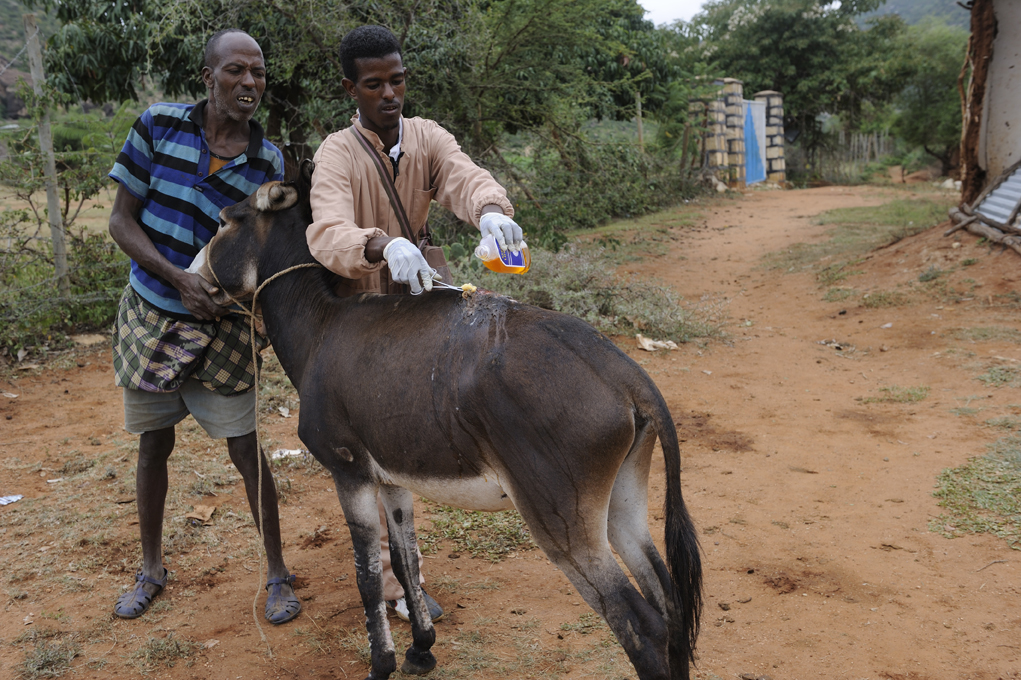|
Jean-Henri Magne
Jean-Henri Magne (15 July 1804 in Sauveterre-de-Rouergue – 27 August 1885) was a French veterinarian. During his career, he worked as a professor at the École royale vétérinaire de Lyon and at the École nationale vétérinaire d'Alfort, where from 1846, he served as director.Sociétés savantes de France (biographical information) In 1836 he became a member of the Société linnéenne de Lyon, serving as its president in 1841/42. He was also a member of the Académie d'agriculture de France and the Académie vétérinaire de France, being chosen as its president in 1855. Published works From 1848 to 1853, he was director of the agricultural journal, ''Le Moniteur agricole''. With ...[...More Info...] [...Related Items...] OR: [Wikipedia] [Google] [Baidu] |
Sauveterre-de-Rouergue
Sauveterre-de-Rouergue (, literally ''Sauveterre of Rouergue''; , before 1962: ''Sauveterre'') '''' n° 0085, 8 April 1962, p. 3677. is a commune in the department i ... [...More Info...] [...Related Items...] OR: [Wikipedia] [Google] [Baidu] |
Veterinarian
A veterinarian (vet) or veterinary surgeon is a medical professional who practices veterinary medicine. They manage a wide range of health conditions and injuries in non-human animals. Along with this, veterinarians also play a role in animal reproduction, health management, Animal Conservation, conservation, husbandry and breeding and preventive medicine like animal nutrition, nutrition, vaccination and parasitic control as well as biosecurity and zoonotic disease surveillance and prevention. Description In many countries, the local nomenclature for a veterinarian is a regulated and protected term, meaning that members of the public without the prerequisite qualifications and/or license are not able to use the title. This title is selective in order to produce the most knowledgeable veterinarians that pass these qualifications. In many cases, the activities that may be undertaken by a veterinarian (such as treatment of illness or surgery in animals) are restricted only to thos ... [...More Info...] [...Related Items...] OR: [Wikipedia] [Google] [Baidu] |
Jean-Henry Magne Par Louis Georges Neumann
Jean-Henri is a French masculine given name. Notable people with the name include: * Jean-Henri d'Anglebert (1629–1691), French composer and harpsichordist * Jean-Henri Dunant (1828–1910), Henry Dunant, a Swiss businessman * Jean Henri Fabre (1823–1915), French entomologist and author * Jean-Henri Gourgaud (1746–1809), French actor under the stage name Dugazon * Jean-Henri Hottinguer (1803–1866), the first-born son of Baron Jean-Conrad, thus making him his successor * Jean-Henri Izamo (died 1966), the head of the gendarmerie of the Central African Republic * Jean-Henri Merle d'Aubigné (1794–1872), Swiss Protestant minister and historian of the Reformation * Jean-Henri Pape (1787–1875), French piano maker * Jean-Henri Ravina (1818–1906), French virtuoso pianist, composer and teacher * Jean Henri Riesener (1734–1806), French royal ébéniste * Jean-Henri Voulland (1751–1801), politician of the French Revolution See also * Jean Gery Jean Gery (before 1638 � ... [...More Info...] [...Related Items...] OR: [Wikipedia] [Google] [Baidu] |
École Nationale Vétérinaire D'Alfort
The National veterinary school of Alfort ( or ''ENVA'') is a French public institution of scientific research and higher education in veterinary medicine, located in Maisons-Alfort, Val-de-Marne, close to Paris. It is operated under the supervision of the ministry of Agriculture. This is one of the four public schools providing veterinary education in France. :''See detailed article Veterinary education in France'' The school was established in 1765 by Claude Bourgelat and moved to its current location in 1766. The school received immediate international recognition throughout the eighteenth century, and was especially famous for its collection of anatomical and natural history specimens. In 2007, ENVA came close to the University; she was a founding member of the PRES UniverSud Paris, Université Paris-Est ; she became an external school of the Paris 12 Val de Marne University, university of Paris-Est Créteil Val-de-Marne in January 2012. Today the school contains about 800 ... [...More Info...] [...Related Items...] OR: [Wikipedia] [Google] [Baidu] |
Académie D'Agriculture
The Académie d'agriculture de France (, AAF) is a voluntary association aiming to contribute to the evolution of agriculture and rural life in the scientific, technical, economic, judicial, legal, social and cultural fields. It is the successor to the société d'agriculture de la Généralité de Paris, founded in 1761 by Louis XV, and has functioned in its present form since a decree of 1878 which recognised it as a public utility. It has 120 titular members and 180 French corresponding members, as well as 60 foreign members. Its bureau is its executive organ and is made up of 6 members, with a president elected for a year and a life secretary elected by his or her peers and named by decree of the French President. It awards annual prizes and medals for contributions to the advancement of agricultural knowledge. It is based in Paris in a hôtel particulier at 18 in the 7th arrondissement of Paris, 7th arrondissement. Names * 1761 - 1788 : Société Royale d'Agriculture de ... [...More Info...] [...Related Items...] OR: [Wikipedia] [Google] [Baidu] |
Mycologist
Mycology is the branch of biology concerned with the study of fungi, including their taxonomy, genetics, biochemical properties, and use by humans. Fungi can be a source of tinder, food, traditional medicine, as well as entheogens, poison, and infection. Yeasts are among the most heavily utilized members of the fungus kingdom, particularly in food manufacturing. Mycology branches into the field of phytopathology, the study of plant diseases. The two disciplines are closely related, because the vast majority of plant pathogens are fungi. A biologist specializing in mycology is called a mycologist. Overview The word ''mycology'' comes from the Ancient Greek: μύκης (''mukēs''), meaning "fungus" and the suffix (''-logia''), meaning "study." Pioneer mycologists included Elias Magnus Fries, Christiaan Hendrik Persoon, Heinrich Anton de Bary, Elizabeth Eaton Morse, and Lewis David de Schweinitz. Beatrix Potter, author of '' The Tale of Peter Rabbit'', also made signific ... [...More Info...] [...Related Items...] OR: [Wikipedia] [Google] [Baidu] |
Claude Casimir Gillet
Claude Casimir Gillet (19 May 1806 in Dormans, department of Marne (department), Marne – 1 September 1896 in Alençon), was a French botanist and mycologist. He initially trained as a medical doctor and veterinarian. As a veterinarian, he worked for four years in Africa. Around 1853 he developed a passion for mycology, subsequently publishing a number of works on the subject. In 1867 he became a corresponding member of the ''Société Linnéenne de Normandie''. Gillet was the binomial authority, taxonomic authority of the genera ''Tubaria'' (initially named a subgenus of ''Agaricus'' by Worthington George Smith) and ''Microglossum''. MycoBank. International Mycological Association He was honoured in 1899, when botanists P.A.Saccardo & P.Sydow published ''Gilletiella' ... [...More Info...] [...Related Items...] OR: [Wikipedia] [Google] [Baidu] |
Botany
Botany, also called plant science, is the branch of natural science and biology studying plants, especially Plant anatomy, their anatomy, Plant taxonomy, taxonomy, and Plant ecology, ecology. A botanist or plant scientist is a scientist who specialises in this field. "Plant" and "botany" may be defined more narrowly to include only land plants and their study, which is also known as phytology. Phytologists or botanists (in the strict sense) study approximately 410,000 species of Embryophyte, land plants, including some 391,000 species of vascular plants (of which approximately 369,000 are flowering plants) and approximately 20,000 bryophytes. Botany originated as history of herbalism#Prehistory, prehistoric herbalism to identify and later cultivate plants that were edible, poisonous, and medicinal, making it one of the first endeavours of human investigation. Medieval physic gardens, often attached to Monastery, monasteries, contained plants possibly having medicinal benefit. ... [...More Info...] [...Related Items...] OR: [Wikipedia] [Google] [Baidu] |
Dairy Cow
Dairy cattle (also called dairy cows) are cattle bred with the ability to produce large quantities of milk, from which dairy products are made. Dairy cattle generally are of the species ''Bos taurus''. Historically, little distinction was made between dairy cattle and beef cattle, with the same stock often being used for both meat and milk production. Today, the bovine industry is more specialized and most dairy cattle have been bred to produce large volumes of milk. Management Dairy cows may be found either in herds or dairy farming, dairy farms, where dairy farmers own, manage, care for, and collect milk from them, or on commercial farms. Herd sizes vary around the world depending on landholding culture and social structure. The United States has an estimated 9 million cows in around 75,000 dairy herds, with an average herd size of 120 cows. The number of small herds is falling rapidly, with 51% of U.S. milk in 2007 produced by the 3,100 herds with over 500 cows. The ... [...More Info...] [...Related Items...] OR: [Wikipedia] [Google] [Baidu] |
Veterinary Medicine
Veterinary medicine is the branch of medicine that deals with the prevention, management, medical diagnosis, diagnosis, and treatment of disease, disorder, and injury in non-human animals. The scope of veterinary medicine is wide, covering all animal species, both List of domesticated animals, domesticated and wildlife, wild, with a wide range of conditions that can affect different species. Veterinary medicine is widely practiced, both with and without professional supervision. Professional care is most often led by a veterinarian, veterinary physician (also known as a veterinarian, veterinary surgeon, or "vet"), but also by paraveterinary workers, such as veterinary nurses, veterinary technicians, and veterinary assistants. This can be augmented by other paraprofessionals with specific specialties, such as animal physiotherapy or dentistry, and species-relevant roles such as farriers. Veterinary science helps human health through the monitoring and control of Zoonosis, zoonoti ... [...More Info...] [...Related Items...] OR: [Wikipedia] [Google] [Baidu] |
1804 Births
Events January–March * January 1 – Haiti gains independence from France, and becomes the first black republic. * February 4 – The Sokoto Caliphate is founded in West Africa. * February 14 – The First Serbian uprising begins the Serbian Revolution. By 1817, the Principality of Serbia will have proclaimed self-rule from the Ottoman Empire, the first nation-state in Europe to do so. * February 15 – New Jersey becomes the last of the northern United States to abolish History of slavery in New Jersey, slavery. * February 16 – First Barbary War: Stephen Decatur leads a raid to burn the pirate-held frigate at Tripoli, Libya, Tripoli to deny her further use by the captors. * February 18 – Ohio University is chartered by the Ohio General Assembly. * February 20 – Hobart is established in its permanent location in Van Diemen's Land (modern-day Tasmania) as a British penal colony. * February 21 – Cornwall, Cornishman Richard Trevithick's newly built ''Penydarren' ... [...More Info...] [...Related Items...] OR: [Wikipedia] [Google] [Baidu] |
1885 Deaths
Events January * January 3– 4 – Sino-French War – Battle of Núi Bop: French troops under General Oscar de Négrier defeat a numerically superior Qing Chinese force, in northern Vietnam. * January 17 – Mahdist War in Sudan – Battle of Abu Klea: British troops defeat Mahdist forces. * January 20 – American inventor LaMarcus Adna Thompson patents a roller coaster. * January 24 – Irish rebels damage Westminster Hall and the Tower of London with dynamite. * January 26 – Mahdist War in Sudan: Troops loyal to Mahdi Muhammad Ahmad conquer Khartoum; British commander Charles George Gordon is killed. February * February 5 – King Leopold II of Belgium establishes the Congo Free State, as a personal possession. * February 9 – The first Japanese arrive in Hawaii. * February 16 – Charles Dow publishes the first edition of the Dow Jones Industrial Average. The index stands at a level of 62.76, and represents the ... [...More Info...] [...Related Items...] OR: [Wikipedia] [Google] [Baidu] |








